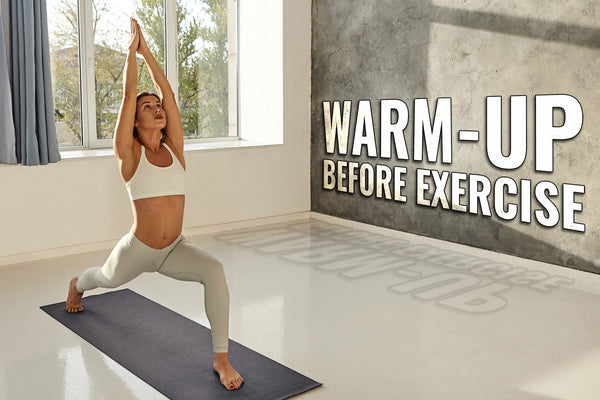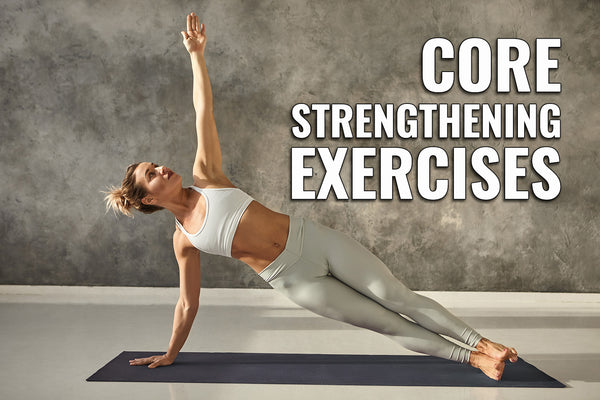Hate to admit this, but your favorite leg game, squats, is causing lower back pain for most of us.
Have you experienced this too? If not, then bless you, lucky one!
If yes, you probably know what it's like to endure debilitating pain while executing your workouts and daily tasks.
Our experts at SUPMOGO understand how critical it is to stay on top of your health at all times, which is why these pains require immediate rehabilitation.
Let's take a closer look at why squats cause lower back pain and what we can do to prevent and treat it.
Here's what you'll learn in this article.
- The Mighty Squats
- What Are Downside of Squats?
- Lower Back Pain from Squats
- Should I Stop Squatting If My Lower Back Hurts?
- Actionable Tips to Prevent Back Pain From Squats
- Stretching
- Following Proper Posture Technique
- Never forget warm-up
- Strengthen Your Core
- SUPMOGO Recovery Flex System Belt | the Savior of Back Pain!
The Mighty Squats
The mighty squats are the perfect workout for weight loss, leg strengthening, core strengthening, and much more. They are a popular exercise that millions of people love and perform worldwide.
Squats help strengthen the knees to reduce the chance of bone, knee, and ankle injuries. According to research, squats significantly improve body composition, muscular strength of knee extensors, and jump performance in teenage boys. [1]
What Are Downside of Squats?
Sorry, but squats aren't everyone's cup of tea. Squating incorrectly can lead to problems, such as lower back pain. If you want to ace your squats, learn the proper technique to avoid adverse circumstances.
You may be performing the exercise incorrectly because of the following reasons:
If you lean too forward during squats, you risk an injury by tilting your spine and putting stress on it.
You could also strain your shoulders if you're carrying weights while squatting.
You can also risk joint injury by performing squats incorrectly, causing a strain on your lower back.
Lower Back Pain from Squats
You may be wondering, why does my lower back hurt when I squat?
The reason why squats hurt the lower back is that squats are multifunctional exercises that work with groups of muscles. When you squat you target your glutes, quads, hamstrings, hip flexors, and calves.
If you lean your upper body forward or your chest extends beyond your knees. OUCH! Here you go with the back strain!
The next thing you remember is holding your lower back for the rest of the week. If the strain is not treated or taken care of, the pain can radiate to the lumbar and cervical spine.
Doing a simple squat should not have such daunting consequences, right? Hence, it's advisable to focus on posture correction and a proper squatting technique to avoid such an unpleasant experience.
Check out this video to learn how to squat properly while avoiding damage to your lower back.
Should I Stop Squatting If My Lower Back Hurts?
If you feel lower back pain when squatting, it's a red flag that you should stop doing it temporarily.
However, there are other reasons your back hurts when you squat, such as inactivity. If your body's not familiar with daily exercise and you suddenly perform a set of squats, you're definitely signing up for lower back pain.
In that case, you start with low-impact exercises and squat with fewer sets but do it daily to familiarize your body with the exercise type.
Actionable Tips to Prevent Back Pain from Squats
You should consider the following things to avoid uncertain results from squats.
Stretching

In the unfortunate case that you develop an injury in your lower back that does not go away, you should do mild to moderate stretching daily to loosen your stiff and tightened muscles. The study also supports that patients who did stretching reported a positive result in reducing lower back pain. [2]
You can perform stretching as a warm-up too. Studies have shown that stretching for 10 minutes can improve stability more than a general warm-up for 10 minutes.
However, there are chances that you still feel pain in your lower back from squats. Reach out to a doctor or physiotherapist for better consultation. [3]
Following Proper Posture Technique

Not following the proper posture is the biggest mistake one can make during a workout. We are not talking about just squats; every exercise can also cause back pain if not done correctly.
You must follow a proper posture advised by your gym trainer for performing squats. According to research, if you want to strengthen your targeted muscles and protect your lower back, perform squats with a correct erect trunk posture. [4]
Never Forget To Warm-Up

Most gym enthusiasts complain that their back hurts from squats. Most of the time, they must have forgotten to warm up.
If you feel low back pain when squatting, it's because your body muscles and ligaments must be warmed up before they sign up for body-resistant exercises such as squats. According to research, if you perform a warm-up before exercise, the evidence favors a decreased risk of injury. [5]
Strengthen Your Core

Core strengthening exercises are recommended for toning your core. Your routine should include exercises that strengthen your core because having a strong core will make you less inclined to get injured in the first place.
You can try core strengthening and back support belts to help you on your mission. But which belt will serve the purpose?
SUPMOGO Recovery Flex System Belt | the Savior of Back Pain!
The SUPMOGO Back Pain Relief System is here to help you get through the pain! Wear the phenomenal SUPMOGO belt when performing exercises such as squats and witness the core strengthening and rehab benefits of this revolutionary belt.
The SUPMOGO Recovery Flex System Belt will ensure that you avoid any kind of exercise-induced injury coming your way. It protects and strengthens the lumber spine and core to provide the maximum strength you need for performing exercises correctly.
Moreover, if you're feeling low back pain from squats, SUPMOGO can help there too. Wear this belt around your back for 30-60 minutes with the water-activated gel pads facing your back. Now, use the SUPMOGO Remote App to personalize your rehab session. This rehab belt has advanced targeting technology that utilizes the body's minerals to stimulate the nervous system and initiate rehabilitation.
Water-activated EMS technology contracts and relaxes the sore, tightened muscles to release muscle recovery hormones that speed up the healing process. [6]
Check out the article covering back pain and nausea
Conclusion
Lower back pain from squats is pretty common. How to beat it? One of the best tips we can offer is that you should primarily opt for bodyweight squats. It will strengthen your core and familiarize you with the intensity of squats.
Additionally, pair your exercise sessions with the SUPMOGO Recovery Flex System Belt to protect your spine, reduce the risk of injury, and rehab while you work out.
Head straight to our website or subscribe to our YouTube channel to find out more about SUPMOGO.

[1] Takai, Y., Fukunaga, Y., Fujita, E., Mori, H., Yoshimoto, T., Yamamoto, M., & Kanehisa, H. (2013). Effects of body mass-based squat training in adolescent boys. Journal of sports science & medicine, 12(1), 60.
[2] Khalil, T. M., Asfour, S. S., Martinez, L. M., Waly, S. M., Rosomoff, R. S., & Rosomoff, H. L. (1992). Stretching in the rehabilitation of low-back pain patients. Spine, 17(3), 311-317.
[3] Adelsberger, R., & Tröster, G. (2014). Effects of stretching and warm-up routines on stability and balance during weight-lifting: a pilot investigation. BMC research notes, 7(1), 1-8.
[4] Lee, T. S., Song, M. Y., & Kwon, Y. J. (2016). Activation of back and lower limb muscles during squat exercises with different trunk flexion. Journal of physical therapy science, 28(12), 3407-3410.
[5] Fradkin, A. J., Gabbe, B. J., & Cameron, P. A. (2006). Does warming up prevent injury in sport?: The evidence from randomised controlled trials?. Journal of Science and Medicine in Sport, 9(3), 214-220.
[6] Kraemer, W. J., Ratamess, N. A., & Nindl, B. C. (2017). Recovery responses of testosterone, growth hormone, and IGF-1 after resistance exercise. Journal of Applied Physiology, 122(3), 549-558.

